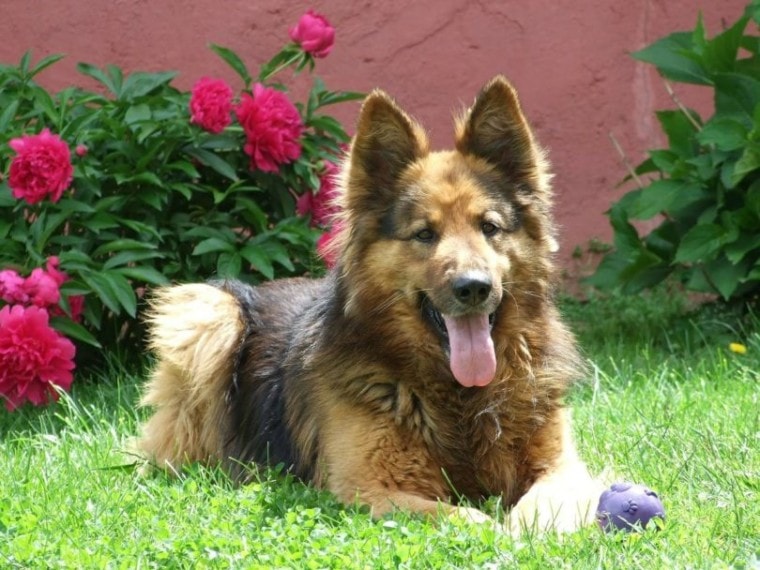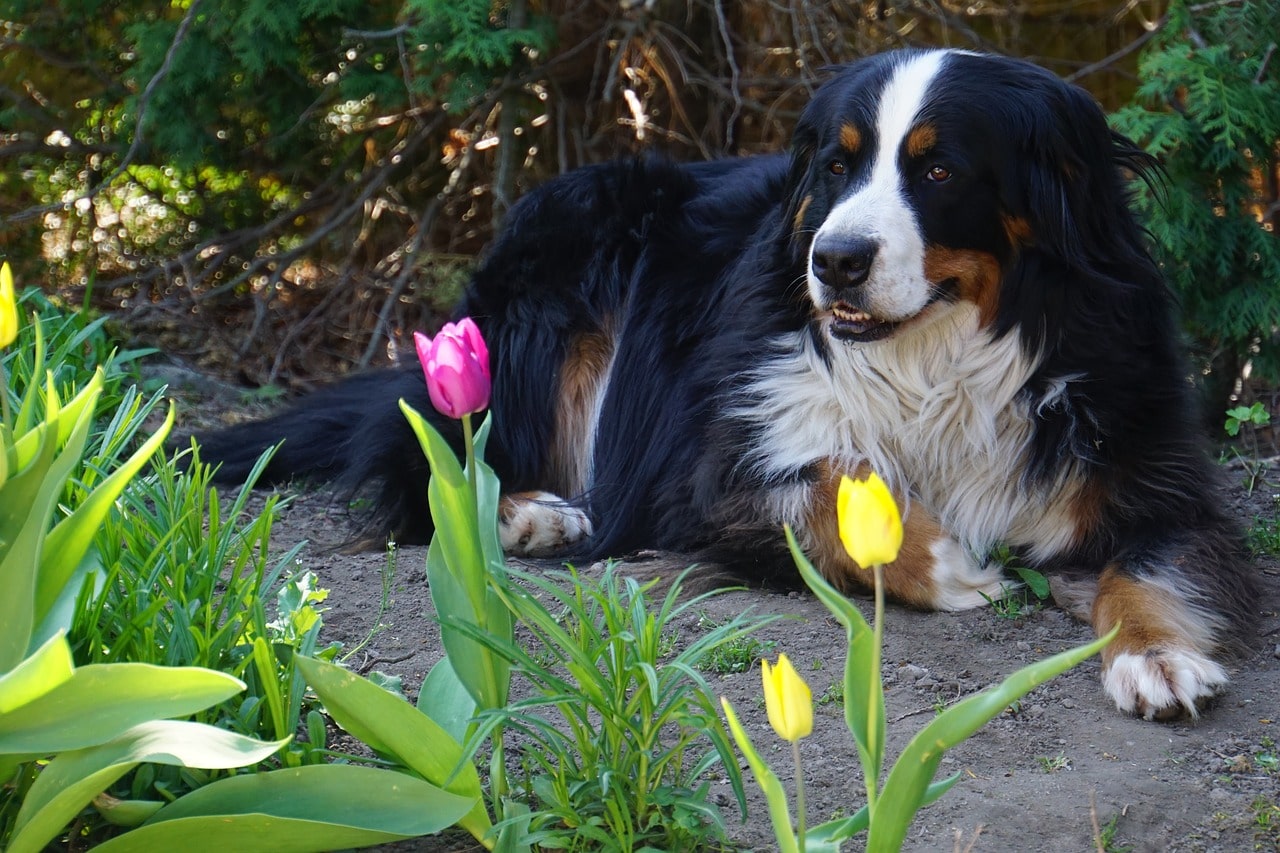
Dogs love being outdoors, and a large garden for them to run and play in is a wonderful resource to have to train, exercise, and play with your pooch. However, dogs, being the fun-loving creatures that they are, can potentially cause havoc to your vegetable garden or flower garden, and even the most well-trained pooches are not immune to mistakenly destroying your flowerpots. Not only that, but you want your garden to be safe for your pooch too, free from toxic plants, harmful chemicals, and sharp objects.
Luckily, building a dog-friendly garden is not that expensive or time-consuming, and there are simple ways to make things safe for you, your plants, and your pooch. In this article, we look at 12 tips for making your garden safe and dog friendly.
The 12 Tips to Create a Dog-Friendly Garden
1. Training
The first step of bringing any dog home is general obedience training. Training your pooch to obey basic commands will go a long way in keeping your precious plants safe and keeping your dog safe too. Dogs love to dig up plants, nap in flower beds, and mark their territory at every opportunity, and teaching them the basics of obedience can stop these behaviors before they begin. Once your pooch knows what’s off-limits after a few corrections, they’ll hopefully remember that and save you some time and destroyed plants!

2. Know your plants
Some plants, such as tulips, lily of the valley, azaleas, and philodendrons, among others, are potentially toxic to dogs, and it’s best to avoid having these in your garden altogether or at the very least, making these inaccessible to your dog. Dogs are curious animals, and avid chewers are bound to take a leaf or stem for a taste occasionally, and it’s better to be safe than sorry. Research what plants you have in your garden, and remove any that pose a risk to your pooch.
3. Border plants
While you want your garden to be dog-friendly, many plants are sensitive and will not survive the onslaught of a dog in full play mode. Strong, sturdy border plants can be planted around areas of your garden that are more sensitive, and these can act as a deterrent to stop your pooch from barreling into your vegetables!
4. Plant mature starters
Despite your best efforts, your pooch may find their way into your precious, freshly planted vegetable or flower garden and destroy hours of work in seconds. A great way to overcome this is to plant mature starter plants that already have strong, healthy, established root systems, which can make them far more likely to survive a canine attack. Larger plants also have the benefit of acting as a visual cue for your pooch to avoid while playing, and if they do manage to snap off a stem, these plants are far more likely to survive than a brand-new seedling.

5. Raised beds
Container beds or raised beds are a great way to make growing plants easier, as you don’t need to bend down to floor level to tend to them. They also have the benefit of being largely out of reach of small dogs, and of course, your dog won’t likely dig them up either. If you have a larger breed of dog, you can further fortify your raised beds by adding a chicken mesh fence around the outside.
6. Fencing
While some dog breeds are expert escape artists and even large fences are barely a match for their athleticism, sturdy, well-installed fencing could be the best way to protect your vegetable garden and flower beds. Of course, this can end up costing a fair bit, but it is one of the best ways of protecting sensitive plants or keeping your dog away from potentially toxic varieties.
7. Paths
Combined with fencing or border plants and good training, clear, dog-friendly paths in and around your garden can make your garden dog-friendly. You can easily train your dog to stay on the path and go along the perimeter of your garden, and they’ll love their daily security patrol! Just make sure it’s made with paw-friendly material, like wood chips, so they are more likely to use it.

8. Deterrents
Sometimes you may need to resort to more potent measures and use a deterrent to stop your pooch from digging.
There is a wide variety of deterrents, and it may be worthwhile to try several to see what works. The most effective methods include crushed pepper or mustard sprinkled around your plants, potent-smelling herbs like rosemary or lavender planted around your more sensitive plants, or burying pinecones just below the surface of where your dog digs, creating an uncomfortable sensation that will hopefully stop them from digging there again.
9. Have a designated dog-friendly area
All dogs love to dig, and sometimes even the most stringent deterrents and training are not enough for avid diggers. Many dog owners have found a solution to this problem: Simply make a designated area of your garden where your dog is allowed to dig to their heart’s content! You can try hiding toys and balls just underneath the surface to show them that this is their personal digging spot, and they’ll hopefully prefer their own area over the rest of your garden. Of course, there is also the danger that this teaches well-meaning dogs that any digging is acceptable, so you’ll need to be consistent with your training.
10. Plant robust plants
There are tons of plant varieties that can make a wonderful addition to your garden that are far more able to handle the onslaught of an excited pooch. Perennials like lavender or nepeta are hardy plants that can easily come back from a broken branch and still look beautiful. Planting mature, established plants will also increase the likelihood of their survival.

11. Avoid using chemicals
An important but often overlooked factor in dog safety is avoiding using any potentially harmful chemicals in your garden that your pooch may accidentally ingest, such as weedkillers. Organic is best, but even so-called “natural” ingredients used in gardening can be harmful to your dog, including various fertilizers, insecticides, and herbicides.
12. Keep your shed secure
Most gardens have a designated shed to keep tools and chemicals in, and there are sharp objects and potentially harmful chemicals that can cause serious injury to your dog. Make sure to keep this shed securely closed at all times, and check that there are no points where your pooch can sneakily gain access.
Conclusion
With a little time and planning, making your garden dog-friendly is a fairly simple and quick process and well worth the effort. You will love the peace of mind knowing that your precious vegetables are safe and that your dog is protected from potential injury. Do you have any handy tips that have worked for you? Please let us know in the comments!
Other Dog Reads:
- Dog Pregnancy: Signs, Care, Checkups
- Calcium Carbonate for Dogs: Benefits, Uses & Side Effects
- Microchipping Your Pet: Pros, Cons, & Costs (Is It Worth It?)
Featured image credit: moorpheus, Pixabay






